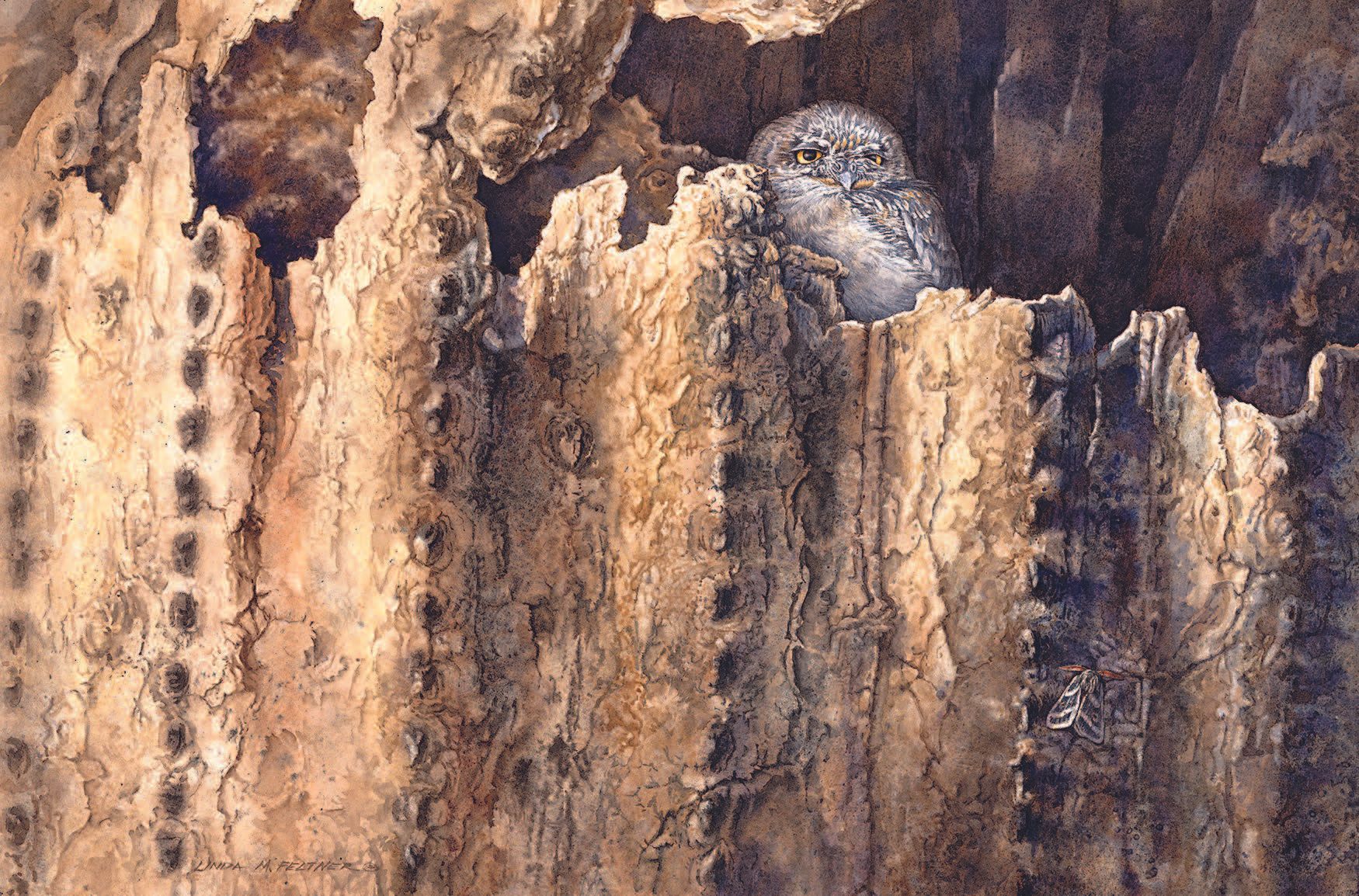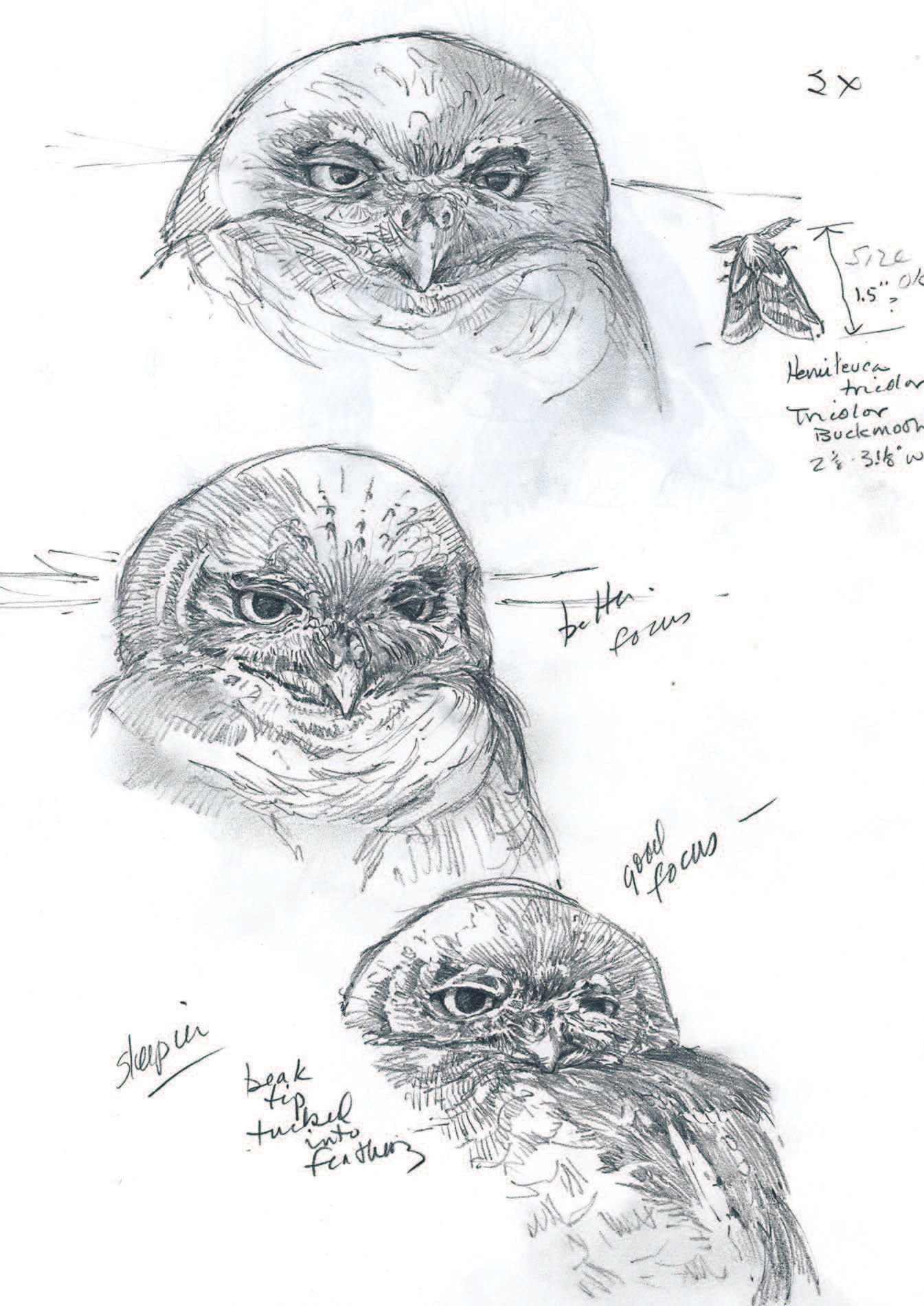Drawing Nature: The Creative Process of an Artist, Illustrator, and Naturalist by Linda Miller Feltner
The title seems to indicate this is yet another drawing instruction manual, but the author, Linda Miller Feltner, instead invites us to join her on a lifelong journey in artistic fulfillment through personal discovery.
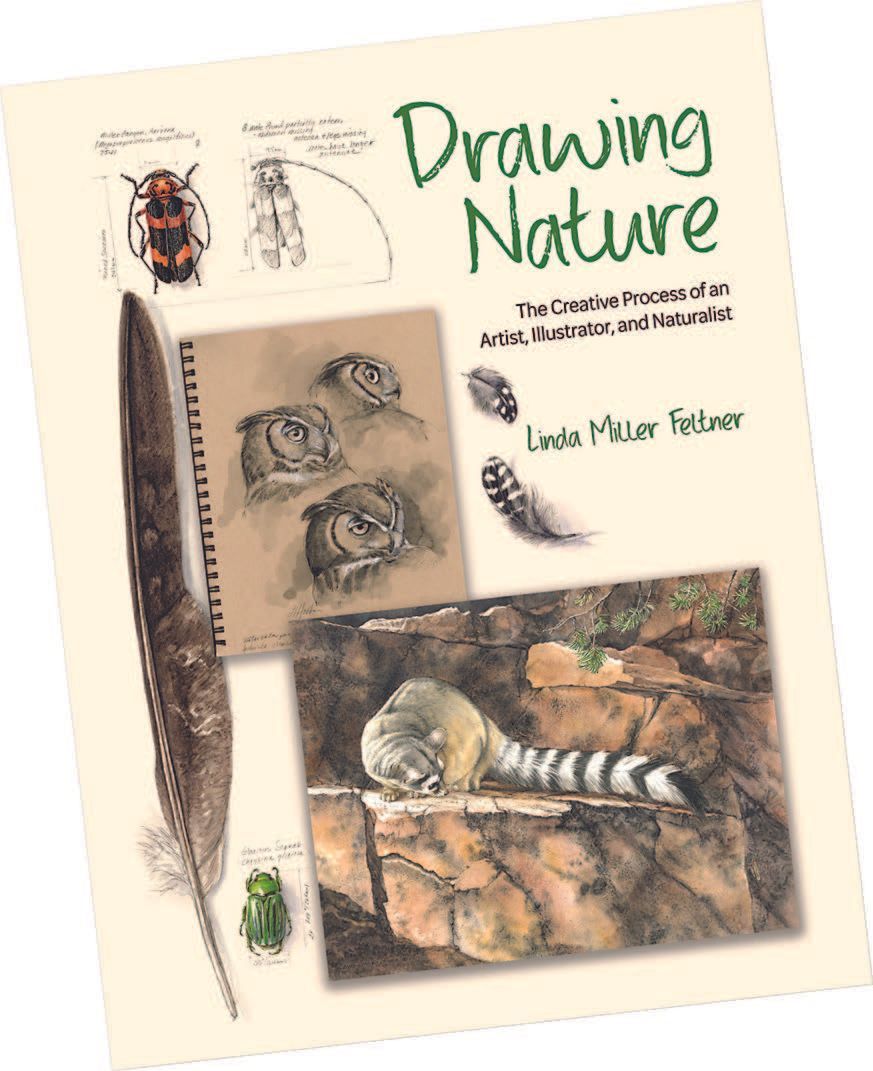
Cover of Drawing Nature: The Creative Process of an Artist, Illustrator, and Naturalist, by Linda Miller Feltner. Published by Princeton University Press, Princeton, NJ, 2024.
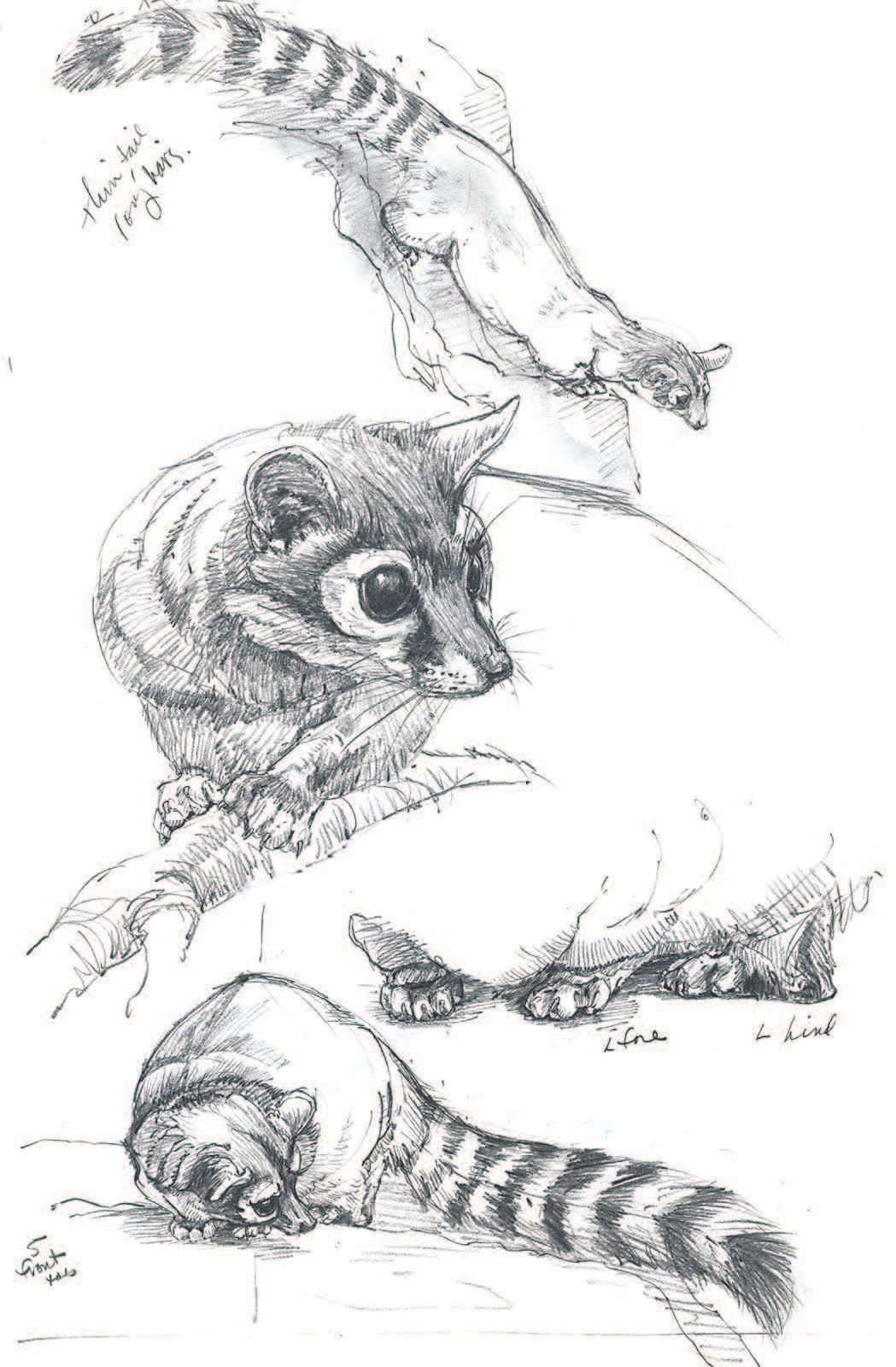
A ringtail in the classroom, a nocturnal native of Arizona.
The inspiration behind Feltner's prolific career is her childlike fascination with nature. She begins the book by examining a shed feather and asking why it is curved and how that might benefit its wearer. Feltner has a particular affinity for birds and will bring live raptors from a rehabilitator to her drawing classes. Although she offers some drawing tips such as proportional measurements and cognizance of internal structures, the primary purpose for these visits is for the students to fully realize the crucial necessity of drawing from the living animal. She cajoles her students to keep their pencils on the paper, for even the most unfinished gesture drawing can reveal the distinctive fluidity of an animal's motion.
Feltner then explains how raw sketches can be refined for inclusion in a painting. Museum specimens and photo references are invaluable for providing those important details that add to the credibility of an image. As the work progresses, she suggests the use of tracing paper overlays for corrections and additions, thus eliminating erasing and losing the spontaneity of the initial drawing beneath. Planning more complex paintings requires careful notan and value studies before color ever touches paper.
Feltner's paintings are executed primarily in transparent watercolor and sometimes gouache, but much of her career has involved producing commissioned illustrations on scratchboard. She outlines the steps involved in accepting an assignment, learning as much as possible about a subject (even to wading in a swamp to gather information), then collaborating with the curator/writer/designer and making many revisions as the work progresses and each stage is approved. Feltner's list of clients is impressive. She has done small illustrations for numerous publications to large interpretive signage and murals for local, state, and national parks, sometimes including portrayals of massive landscapes. She is involved in conservation efforts and has donated her artwork to natural restoration efforts.

The boxing caterpillar.
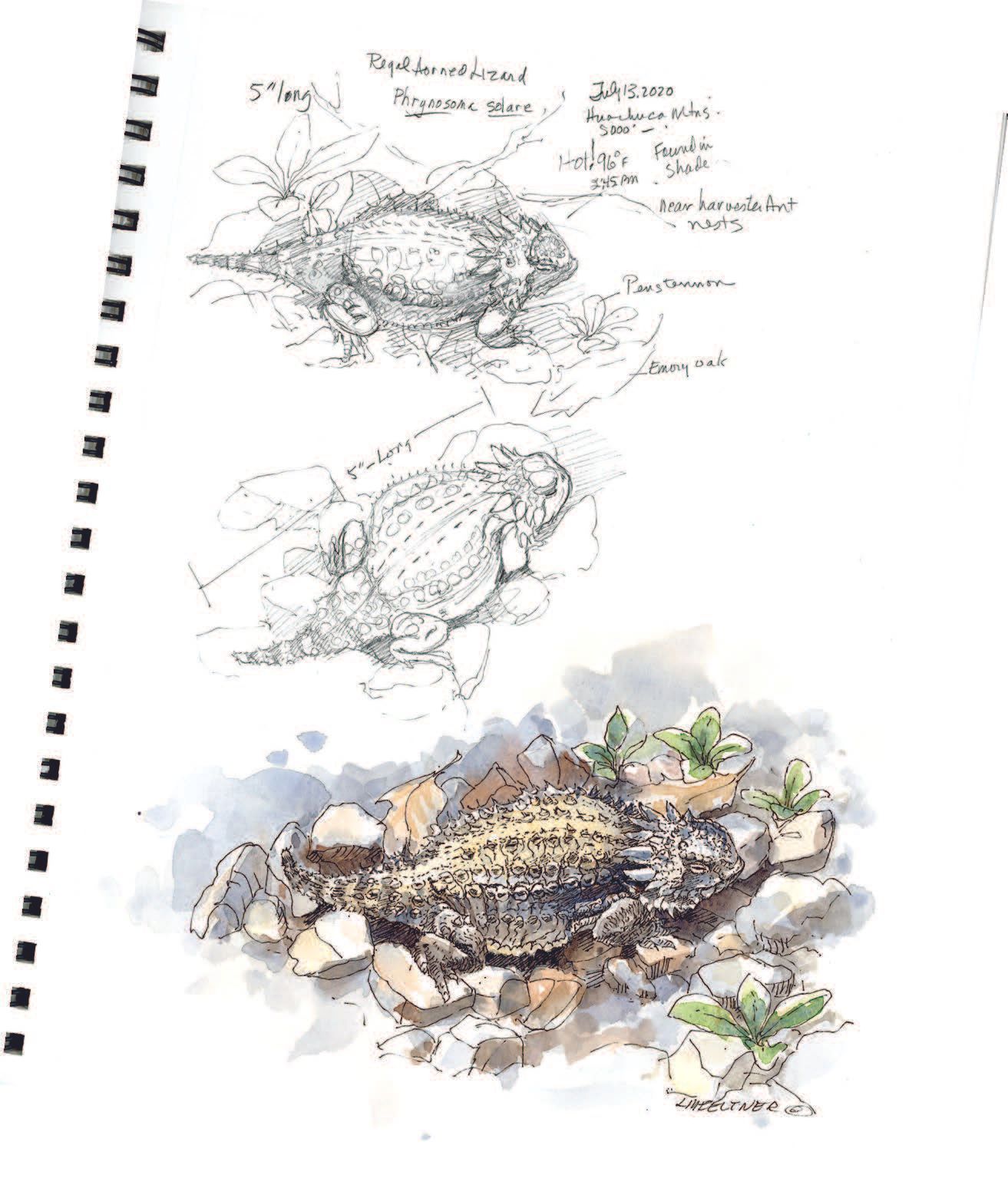
Regal horned lizard (Phrynosoma solare).
Not many artists would be willing to divulge their entire creative process, from the wellsprings of their deepest inspiration through the steps to final production. They might lack the command of language to do so, or feel too vulnerable by such exposure, leaving the artwork to speak for itself. Feltner not only enthusiastically shares her artistic journey, but she personalizes it by her own script that graces many of the pages.
This delightful romp through an artist's life is a feast for the eyes and an inspiration for the soul.
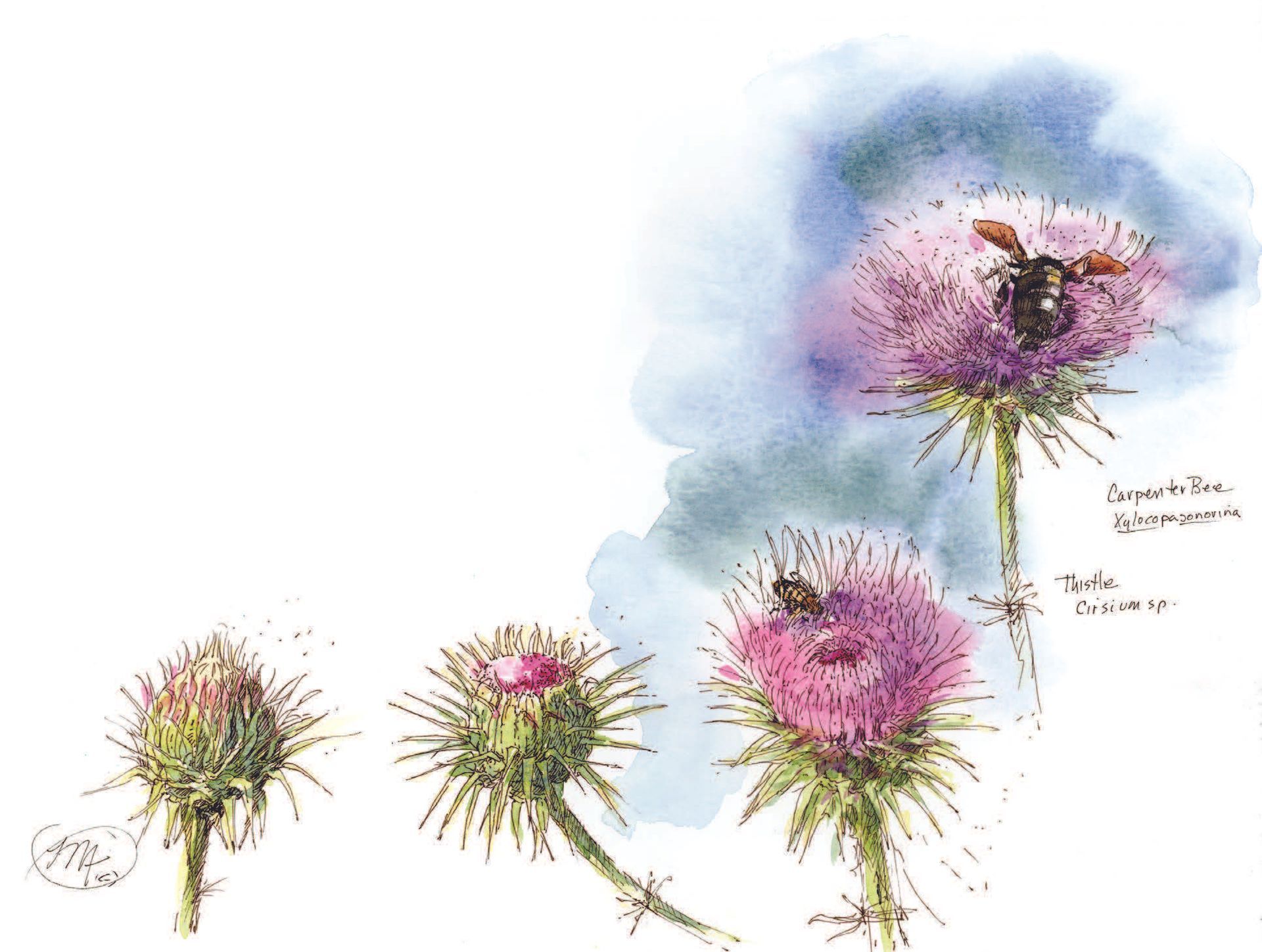
Contemplating insects on a thistle. Ink and watercolor.
All artwork © 2014–2023 Linda Miller Feltner.
Drawings and studies are on Canson Montval Watercolor Sketchbook. 140 lb. (300g) cold press, unless otherwise noted.
Drawing Nature: The Creative Process of an Artist, Illustrator, and Naturalist, by Linda Miller Feltner.
Published by Princeton University Press, Princeton, NJ, 2024.
Hardcover: 227 pages
ISBN-13: 978-0691255385


